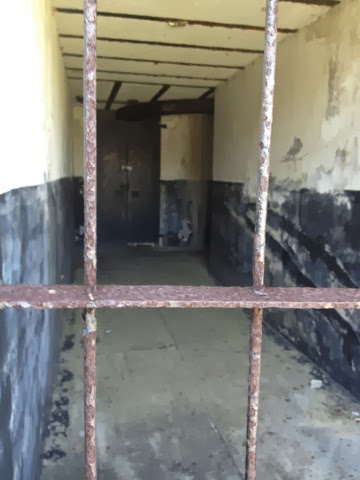Today, my sister, brother-in-law, niece and I got to tour the historical fort, Fort Morgan, that was built after the War of 1812. It was designed to control the main ship channel into Mobile Bay and to prevent any enemy forces from entering.
The connecting tunnel through the surrounding area of the fort. The tunnel originally had a sand floor.
The sallyport: the main entrance to the fort. The date "1833" is the year the fort was named, not when it was completed. It was completed in 1834. It was named for General Daniel Morgan, a Revolutionary War hero.
The ditch, also known as the dry moat, surrounds the fort. It was intended to prevent an enemy from easily reaching the walls of the fort. The ditch could be swept with a deadly crossfire from guns mounted in the fort's bastions. It also carried rainwater out of the fort.
This is right inside the fort. I am in awe by the skills of architecture the creators of this fort had. The fact that it is still standing is amazing.
The two 24-pounder flank howitzers mounted in each of the fort's ten flank casemates could deliver a deadly crossfire on any attackers in the ditch.
Here, I am standing on the extremely tall stairs that led to the top of the fort. The five projecting corners of the fort are bastions. Cannons were mounted on top of each bastion to fire over the wall.
This is the inside of a casemates. These arched rooms were designed as protected gun positions for the fort's cannon, but few cannons were ever mounted in them. Used for the storage of food and equipment, the casemates occasionally served as living quarters for troops in order to shelter them from enemy bombardment.
Nothing was written about a potential trolley that came through here. I am guessing that it was used to move the cannon balls around.
This was where the two most powerful batteries on post sat. Lead counterweights weighing 30 tons were dropped to raise the gun into firing position above the concrete wall.
The beautiful Mobile Bay, where the U.S.S. Techumseh sank, drowning over 90 of its crew. Twenty-one sailors escaped, including four who were taken prisoner when they swam to Fort Morgan.
If you're ever near Gulf Shores, you must make the 20 minute drive to Fort Morgan. A piece of Alabama history that was well worth the trek. So glad I came along today.


























No comments:
Post a Comment